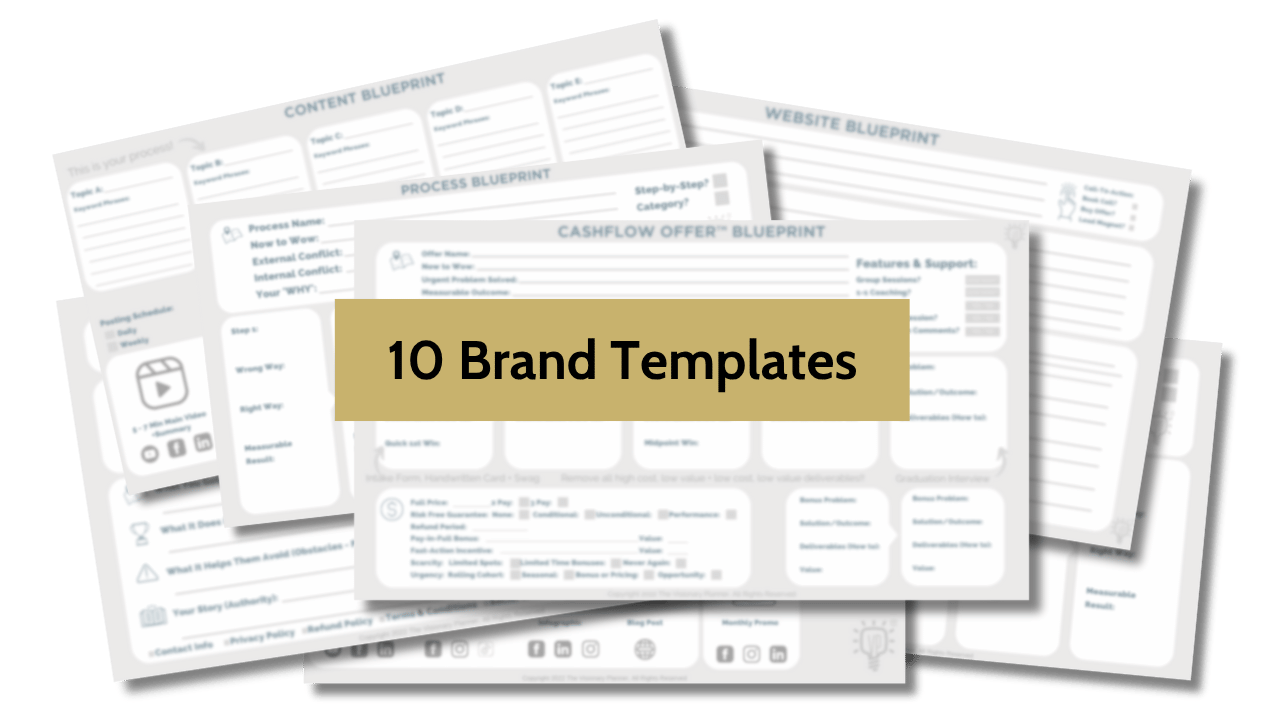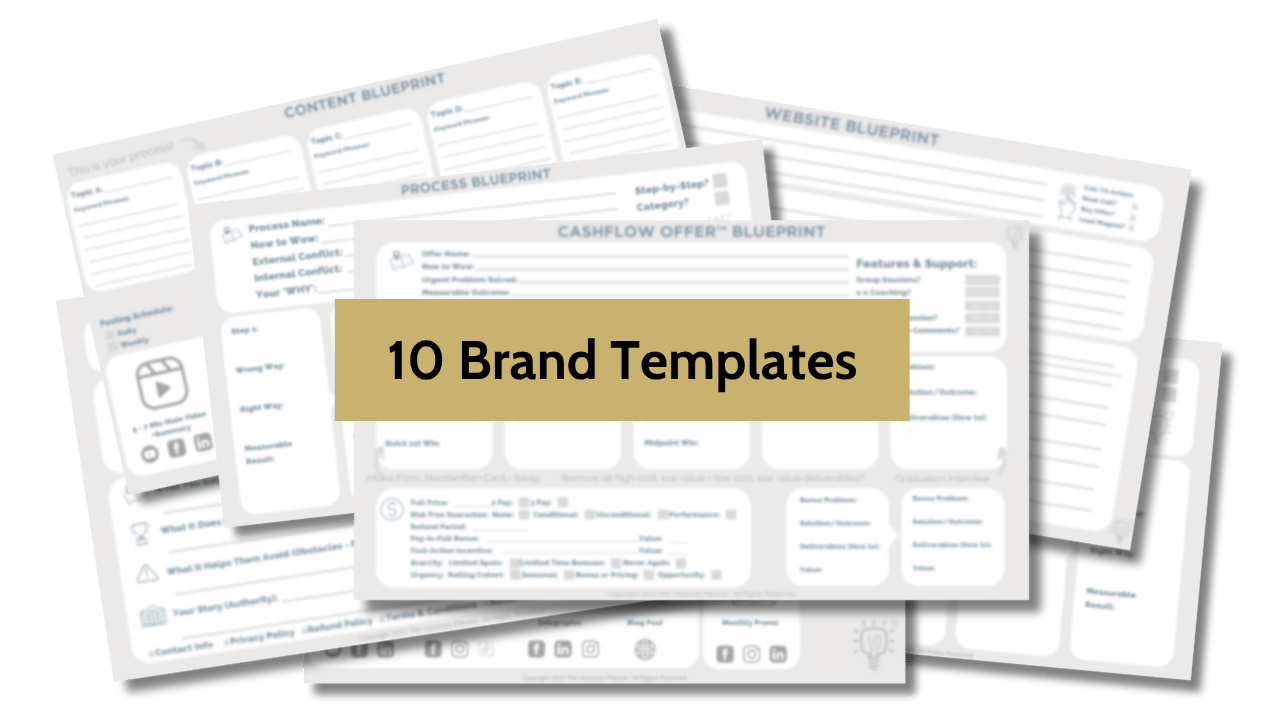8 Steps To Drive Traffic With Content Marketing On Social Media
Mar 12, 2019
Welcome to Part 3 in a trilogy of articles on how to create a Brand that lets you P.L.A.Y.
P.L.A.Y. lets you:
- Create Passive Income so you can make money with minimal effort.
- Enjoy the Lifestyle your Brand’s profits provide.
- Build your Authority so you can leave your mark in the world.
- Do what You’re really passionate about so you feel fulfilled every day.
If you’re wanting to create a Brand around yourself, a creative Vision you have or your expertise, you’re going to love what you’re about to discover…
Now, before we venture forth, let me introduce myself…
My name is Mike L. Murphy and I’m the co-creator of the Visionary Planner. If you want to know a little bit more about me I made this animated video…
Recap of Parts 1 and 2
In Parts 1 & 2 of this trilogy of articles you learned:
- Visionaries create Brands.
- Brands should create an unforgettable Audience Experience for their Audience, just like a theme park does.
- Every aspect of a Brand should be planned out with care and detail.
- A Visionary must follow proven systems and verify their concepts as they build their Brand.
- There are 4 Phases to building a Brand (called the Visionary Loop).
1 - Visualize
2 - Research & Study
3 - Produce
4 - Educate & Entertain
If you want more info about the loop, watch the video below:
In this final article, you’re going to learn:
- How to grow your Audience List using the ‘blocks’ of ‘Premieres, Episodes and Contests.
- How to use Social Media Channels to grow your Audience and Guest Lists.
- How to use Episodes and Publishing Calendars to strategically build assets instead of creating waste.
3 Parts to this Article Trilogy
If you want to skip to the other parts, click the link below:
- Part 1 - How to plan your Brand
- Part 2 - How to plan your Website
- Part 3 - How to plan your Social Media
Visionary Definitions
If you’re not already familiar with our Visionary Planner terms, here are some key definitions you should know:
Brand:
A set of expectations, memories, stories and relationships that, taken together, account for an Audience’s decision to choose one product or service over another.
A great Brand should deliver a clear message, provide credibility, create an Emotional bond, motivate an Audience to buy, and create Guest loyalty.
Audience:
The assembled spectators, listeners or readers who are interested in the topic of a Brand.
Guest:
An Audience Member who purchases any of a Brand’s Treasures. In the Visionary Planner we call customers Guests in order to emphasize the fact that a Visionary should treat all Treasure Buyers as most honored Guests.
Treasure:
A valuable product or service that the Audience of a Brand purchases.
Visionary:
A person with original ideas about what the future will or could be like.
Ready to dive into the fourth Phase of the Visionary Loop, Educate & Entertain?
This is the phase where you Premiere your Brand to the world! Everything should be built and verified so you can have total confidence your Brand has the highest likelihood of pleasing its Audience and generating consistent and repeatable revenue.
This is where Social Media and content publishing come in.
Most people who are building their first Brand want to jump right to this step (after they make a website) because they think this is what you need to do first.
The truth is, this is what you need to do last!
Before you drive an Audience to your Brand (also known as ‘getting traffic’) you need to have your foundation clearly set. That means you’ve spent tons of time to properly plan everything out, analyze what others in your niche are doing and verify you can find an Audience who is ready to engage with your Brand.
Let’s assume you do what I did back in 2011…
 I was told I needed to start building an Audience List. So I did! Using Social Media and running Ads, I was able to spend about $1000 to get 40,000 people on my Audience List. I felt like a rock star!
I was told I needed to start building an Audience List. So I did! Using Social Media and running Ads, I was able to spend about $1000 to get 40,000 people on my Audience List. I felt like a rock star!
The problem was all these people required attention. They wanted to interact with me. They wanted to ask me questions. They wanted my time.
Typically, I’d refer them to buy my Treasures (products and services) but I had none to sell. And I didn’t have the time to create any because I was spending all my time socially engaging with my Audience. They kept asking, ‘When will you have stuff to sell?’ but I was too busy answering that question to make anything. And since I wasn't generating revenue, I couldn’t hire a Team Member to help me manage my Social Media.
In short, I did everything backwards.
I should have spent $100-$300 on Ads to verify my Brand and then found out what my Audience wanted. Then I should have figured out the skills to build those things. I should have gone slow and steady and not created a full time ‘answering Facebook comments’ job for myself so early on.
After I verified my Brand I should have frozen everything, built my Audience Path, Free Treats and a Treasure #1. During this time I was working 10 hours a day supervising on some pretty big movies. So having all my time eaten up doing the wrong things, in the wrong order was not smart.
Then I should have ramped up my Marketing machine and grown my Audience List. Because the hard work of building my Foundation Path (Visionary Site, Social Media Channels, Free Treat, Destination Articles, Audience Path and Treasure #1) would have been done, I could then focus on Educating and Entertaining my Audience. They would start to engage with my Brand and then I could get them to pre-pay for me to create my additional Treasures.
There are 8 Blocks to the Educate & Entertain Phase of the Visionary Loop. We call these Blocks because, just like Lego Bricks, you use them to build your Brand.
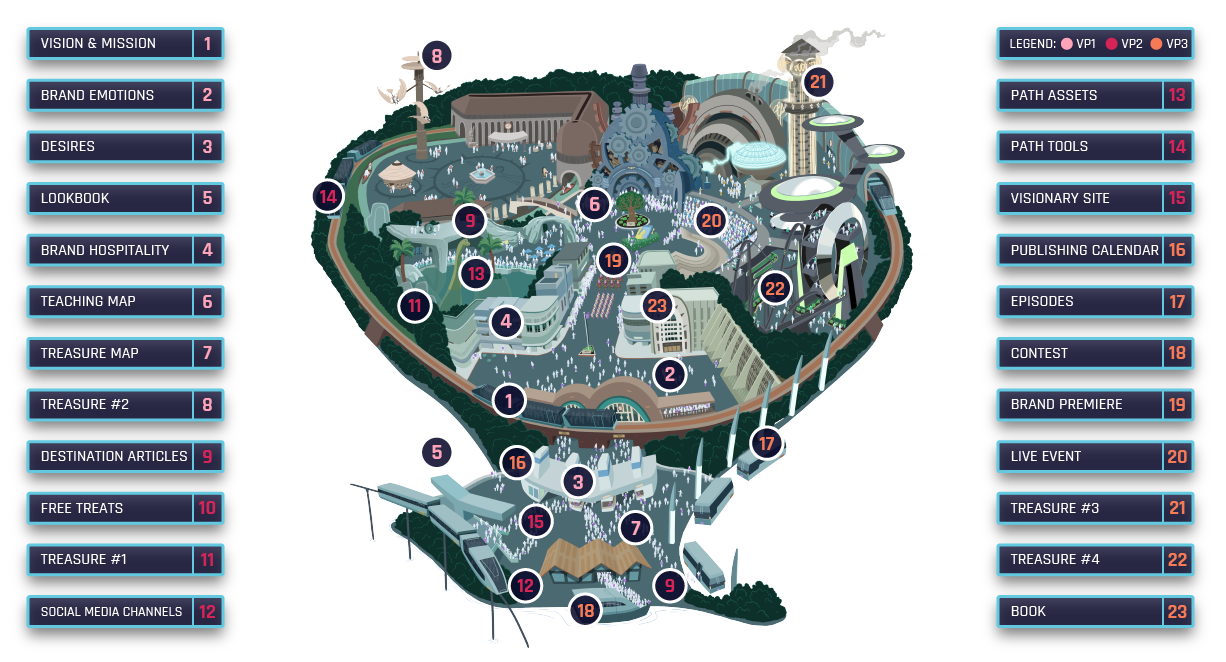
These 8 Blocks include:
- Publishing Calendar
- Episodes
- Contest & Summit
- Brand Premiere
- 5Live Event
- Treasure #3
- Treasure #4
- Book
If you don’t follow the 23 Blocks of the Visionary Experience (check out Part 1 and Part 2 to find out what the other ones are) then you’re always going to be inefficient. You won’t be making the revenue you should be making that will let you scale up and have free time to enjoy it.
I learned from my mistakes when I created my second Brand… except this time I got too many clients. I was making great money but had no time to enjoy life or scale up.
That’s why we recommend you perform each of the blocks the Visionary Experience lays out in the precise order. These are designed to help you build your Vision in the most efficient and painless way. Because if you do it wrong you’ll become trapped by your Vision. Not a good place to be.
The key to Educating and Entertaining is to keep your Audience in mind. If you complete each Block in order you should have plenty of insights on who your Audience is before you start using Social Media to engage with them.
So on that note, let us clarify when you should begin your Social media strategy, and how you can use it to get paid to create a Treasure.
Let’s examine what the first Block of the Educate & Entertain phase is…
1) Publishing Calendar
A calendar that lets a Visionary strategically define what their Episodes will be. It also tracks the progress of Episode production, posting and engagement.
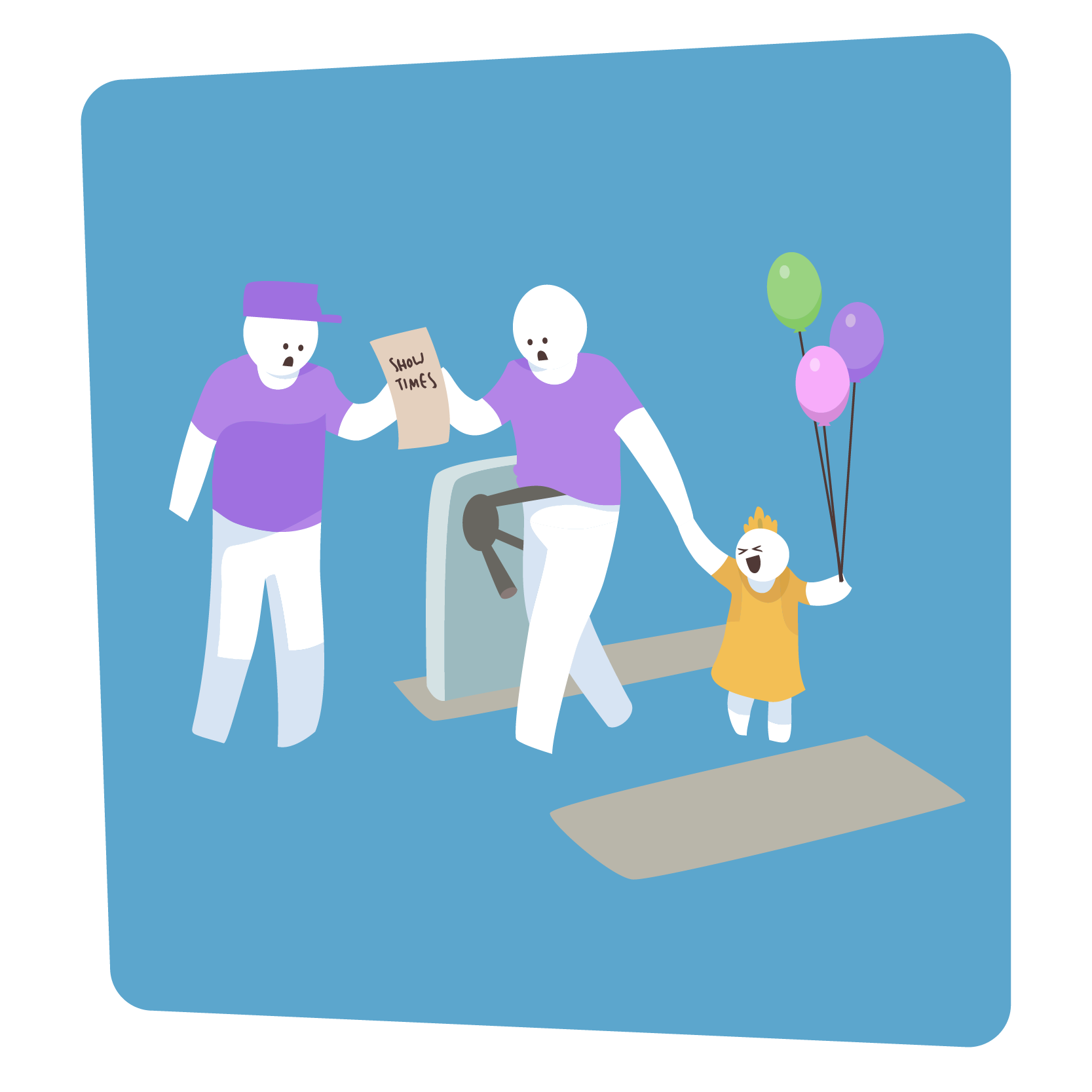 When Disneyland Guests enter the park they receive a flyer that lists out all the times and locations for parades, live shows, character meet & greets and live music. Disneyland even plans out events like Halloween, Christmas and anniversaries.
When Disneyland Guests enter the park they receive a flyer that lists out all the times and locations for parades, live shows, character meet & greets and live music. Disneyland even plans out events like Halloween, Christmas and anniversaries.
That means Disneyland takes the time to Map out what Education (like their ‘Jedi Academy’ that trains kids how to be a Jedi knight) and Entertainment (like the amazing fireworks shows that must annoy the neighbors) is going to be week by week. This gives them enough time to hire their Team, print up materials and do proper rehearsals.
In your Brand, you must Map out your Entertainment as well.
Unlike a theme park you’re not going to have fireworks, jazz bands and the ability to meet Princess Elsa (and if you do, don’t let Disney’s lawyers find you!)
Instead you’ll most likely reach your Audience via Social Media, Ads, Live Events (like conferences or seminars in your niche), radio or podcast interviews... the list goes on!
You’ll also want to plan out all the special events like holidays so you can mention them in your Social Media and promotions. After all, any reason to hold a sale or break up the monotony of daily life (and give your Audience value) is going to make your Brand stand out.
Therefore, you’re going to need to plan this all out in advance. You’re going to need a Publishing Calendar.
A Publishing Calendar is a calendar that lets a Visionary strategically define what content they’re going to post should be. It lets you pre-plan for holidays, special events and promotions. It allows you to create a unique Experience each month, and also know well in advance what your Episodes will be.
You might be thinking, ‘What’s an Episode?’
An Episode is each of the separate installments into which a serialized Story is told to a Brand’s Audience that Educates and Entertains them in order keep them engaged. Episodes can exist in many types of media, including video, audio podcasts and written articles.
Instead of a normal blog post, which is randomly written based off the whims of the blogger, an Episode is planned out to Educate and Entertain your Audience about a specific Treasure or Free Treat you’ve got.
If you’ve built your Brand using the Visionary Planner teachings, then you can confidently post new Episodes each week that drive your Audience towards either getting on your Audience List (those that signed up for your Free Treat), or your Guest List (those that bought a Treasure).
Episodes should be done in a way that they stand alone, but also can ‘stack up’ into a larger form of content…like a book or training program. In fact, we teach our students how to do both.
At the end of each three month cycle your Episodes should string up into a book that you can sell on Amazon and iBooks, but also add some Content Treats to each Episode (such as a Cheatsheet or Worksheet) and add those to your Treasure #2 (your continuity program that comes with Group Coaching).
When you use a Publishing Calendar you’ll make sure your Episodes can link up and be leveraged to create additional Treasures. You can also make sure you’re telling Stories about upcoming holidays and promotions. This lets you plan well in advance so you don’t miss out on any great opportunities to give your Audience another reason to get engaged with your Brand!
A Publishing Calendar is also a great way for your Team to be fully aware of what they will need to publish on Social Media. This gives everyone enough time to create amazing content, instead of a last minute rush job.
2) Episodes
Each of the separate installments into which a serialized story is told to a Brand’s Audience that Educates and Entertains them in order to keep them engaged. Episodes can exist in many types of media; including video, audio podcast and written articles.
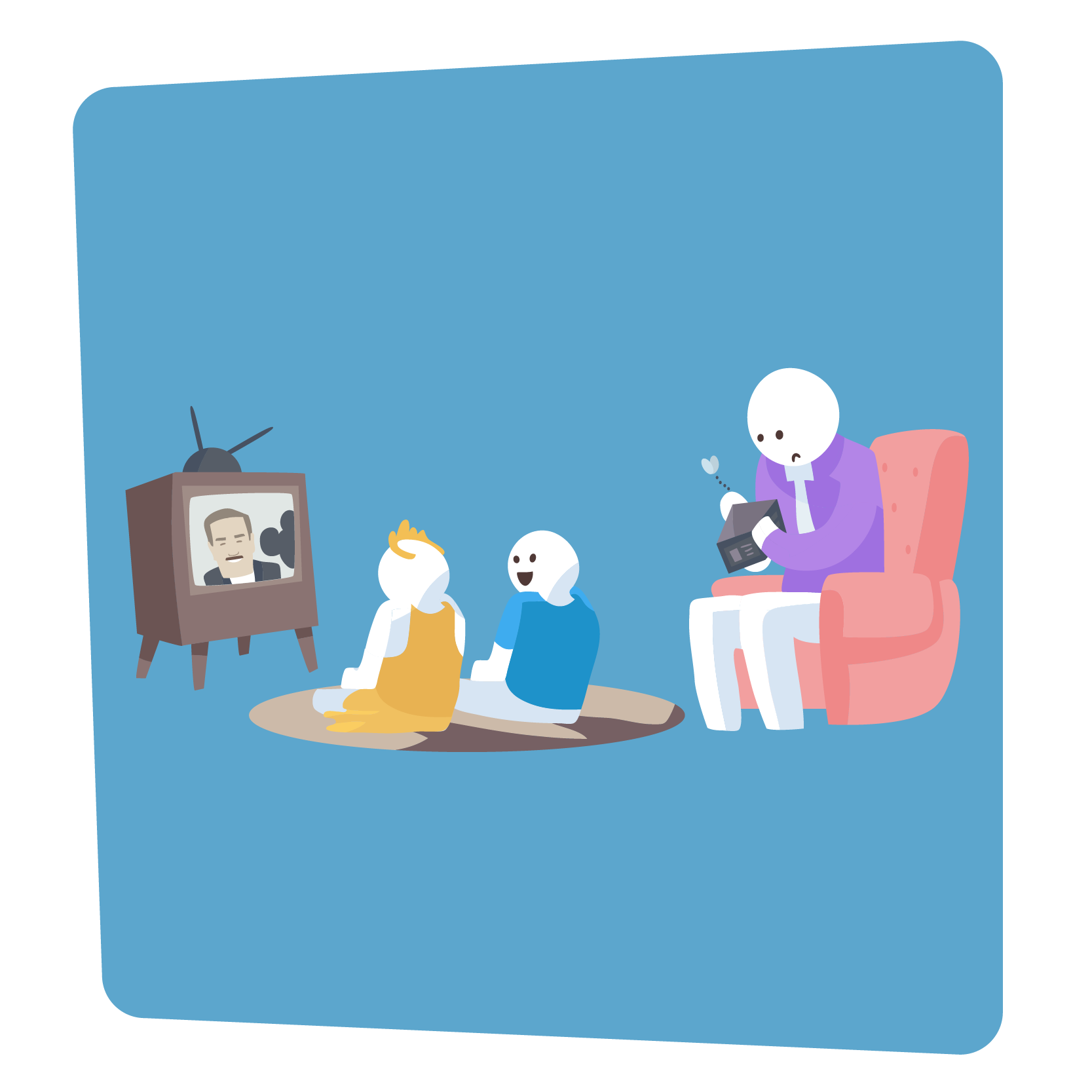 Back in 1954, Walt partnered with ABC TV to produce a weekly show called ‘Disneyland’. This episodic show Educated and Entertained millions of viewers each week and got them excited to visit the park. The show ran until 2008, making it the second longest show on TV. It also made sure that everyone knew about Disneyland.
Back in 1954, Walt partnered with ABC TV to produce a weekly show called ‘Disneyland’. This episodic show Educated and Entertained millions of viewers each week and got them excited to visit the park. The show ran until 2008, making it the second longest show on TV. It also made sure that everyone knew about Disneyland.
How might having a weekly show that promotes your Brand help you grow your Audience?
This show was the secret sauce that let Walt share the Brand Story of Disneyland with his Audience.
They tuned in each week to get to know Walt, and see what crazy behind-the-scenes activities were happening. Getting this back-stage pass made them feel like they were a part of the creation. And people love to take ownership of things they create.
The secret to this show was that it told a consistent Story. It had reoccurring characters (such as all the artists who were helping to create Disneyland). It also featured narrative episodes like ‘Davy Crockett’ that told Stories of the characters who would be inhabiting the park.
Your Brand needs to create and post consistent content that you know will Educate and Entertain your Audience. We call these Episodes.
These Episodes can be video based, audio based or written. Our Audience Planner training shows you how to do all three of these mediums at the same time for maximum leverage.
They should be short and sweet, typically between 3-7 minutes (the shorter and more concise the better). These should also be ‘casual’, as if you’re having a conversation with a friend. You don’t want these to feel corporate or stuffy. If you examine the Disneyland show, Walt is very informal and friendly which made viewers relate to him. In fact he soon became referred to as ‘Uncle Walt’.
Here’s the formula we recommend:
- What will the Audience learn, or what is the topic?
- Quick introduction to who you, or your Brand is.
- Teach the what and the why of your topic.
- Tease about your Free Treat that reveals the How.
- Tell them where they can get the Free Treat.
- Thank them for watching!
- Tease about next week’s content.
Episodes help keep your Brand at the forefront of your Audience’s mind.
When you take the time to properly Map out a ‘Story arc’ that spreads across multiple Episodes it sets up ‘open loops’ and ‘cliffhangers’ that make your Audience want to check in the following week to find out what happened.
You can only do this if you plan ahead.
Most business owners struggle to post random content each week and then wonder why no one is tuning in. The secret is to employ Hollywood Storytelling techniques to hook an Audience and get them to come back weekly.
That means you’ll want to use the same techniques that helped Walt share the Story of Disneyland with a worldwide Audience. This Story has ended up creating a Brand that has 5 ‘Magic Kingdom’ parks on 3 continents and generates billions each year.
Imagine what you can do for your Brand by posting a 5 minute video each week!
3) Contest & Summit
An event that allows a Brand to grow its Audience’s awareness in which they compete for prizes during the first public appearance of a Brand.
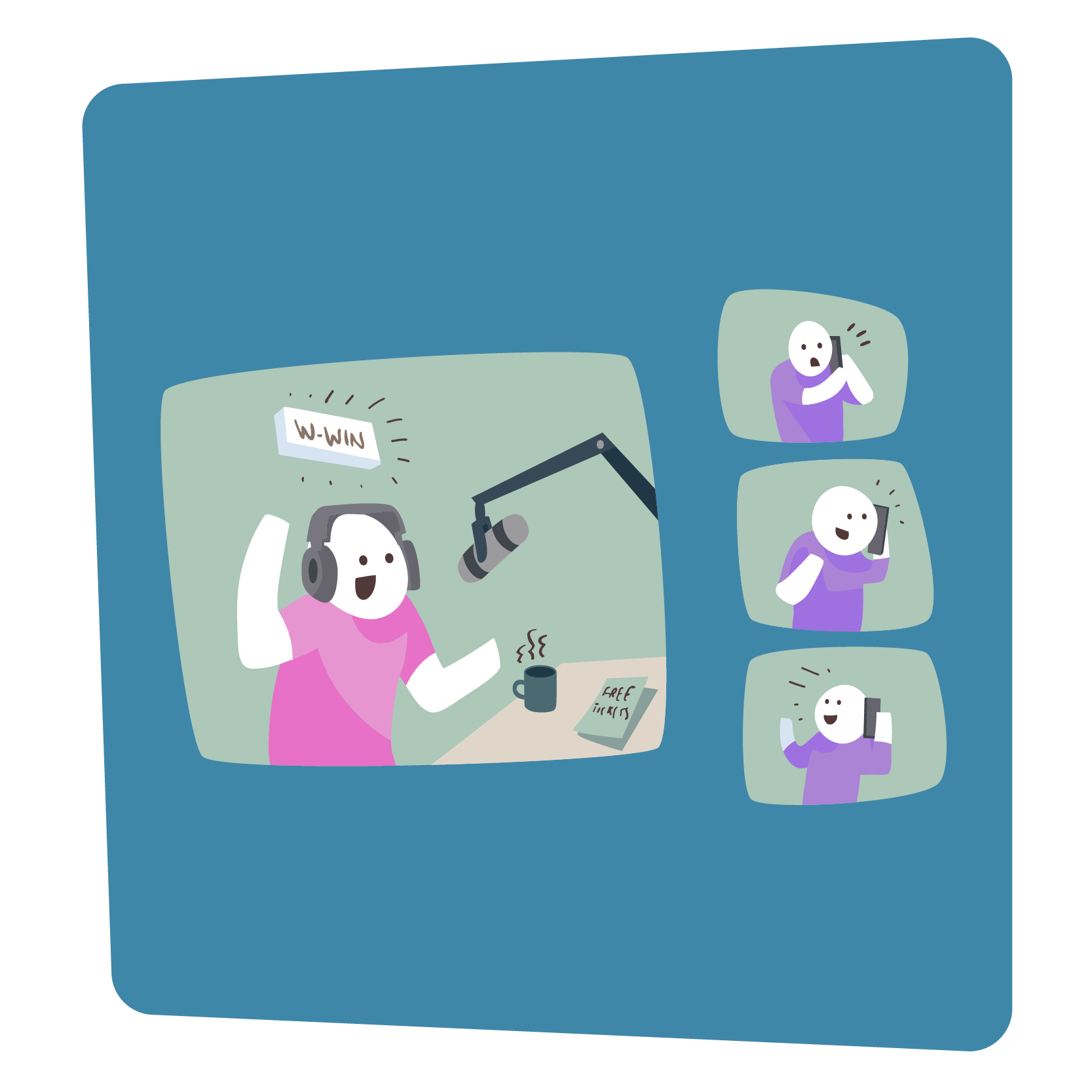 Often TV and Radio stations give away free tickets to Disneyland as part of a promotional contest. They usually do this whenever Disneyland is doing something special like opening a new ride. TV and Radio station fans compete for the coveted free tickets for the thrilling experience of standing in lines all day long!
Often TV and Radio stations give away free tickets to Disneyland as part of a promotional contest. They usually do this whenever Disneyland is doing something special like opening a new ride. TV and Radio station fans compete for the coveted free tickets for the thrilling experience of standing in lines all day long!
A summit is a great way to build relationships with other business leaders, create an event, grow your marketing list and have a new product to sell (Summit ‘replays’ often sell for $197-$997).
We like to group contests and summits together in order to create a one-two punch for list growth.
The first time you launch, or Premiere your Brand you must make it special!
The great thing about the internet is that things can quickly go viral.
For this reason you’re going to want to incorporate a contest into your Premiere to get your list super excited (and reward them for following you).
This contest accomplishes a few goals. First it gives your Audience a reason to care about your Brand (they get to win free stuff). Second they are encouraged to share your Brand with their friends and peers. This helps your Brand spread its reach while reducing Ad spend. Third, it lets you pinpoint who your most diehard fans are and gather amazing testimonials and feedback.
In our Visionary Planner Trainings we teach how to do this the right way.
A summit lets you cast a wider net than your current marketing list. This is because, in theory, the fact that your summit consists of interviews from other experts, their Audiences might sign up for the summit and get on your list.
Even better, you will have built some solid relationships with other thought leaders in your industry after you interview them for 40 minutes.
That's why we recommend the one-two punch of contests and summits when you're ready to unveil your brand to the world!
4) Brand Premiere
The first public appearance of a Brand, Treats and Treasure #1 that allows a Brand to start creating awareness with its Audience.
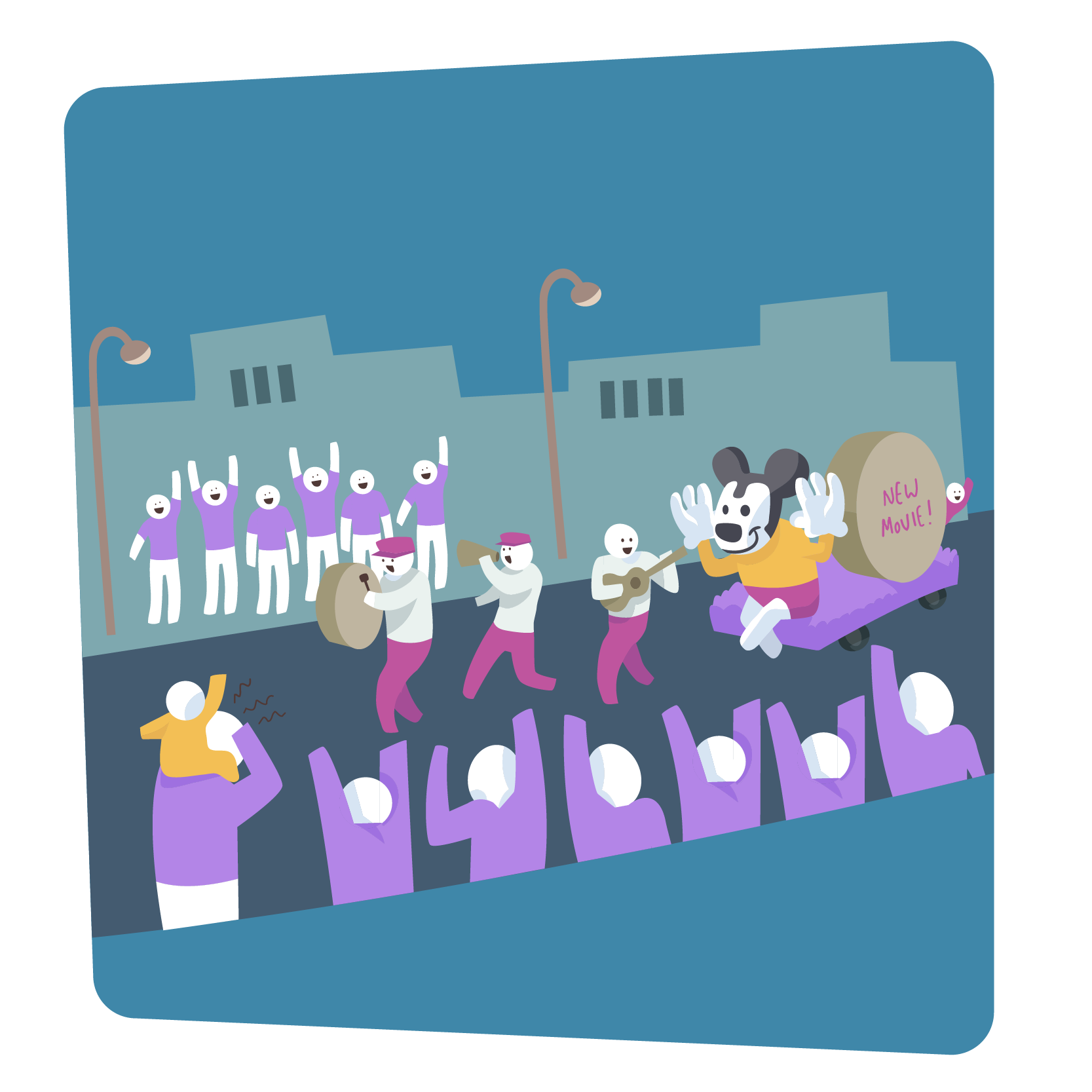 Whenever Disney Studios opens a new movie they have a parade inside Disneyland so they can start creating awareness about the movie’s characters and story.
Whenever Disney Studios opens a new movie they have a parade inside Disneyland so they can start creating awareness about the movie’s characters and story.
In your Brand, you’ll want to create an event that, just like a parade, causes everyone interested in your niche to line up and take notice. This is what your Brand Premiere is meant to do.
This Premiere happens right after you launch your summit (when you have fresh pop of subscribers to your Audience List).
Here you'll create 3 educational videos where you pre-launch your signature product (your Treasure #3). This way you reduce your risk by having your Audience tell you WHAT they want, then PAY for it in advance. This proves that they really want it and helps you fund the creation of it.
In your Brand Premiere you’re going to add extra fuel to the fire by running Ads, reaching out to other Brands for cross-promotion, and quickly revising your Branding as you get valuable feedback from your Audience.
A Brand Premiere is simply meant to, just like a parade, create an event that makes an Audience want to participate and pay attention. A Premiere should be a celebration of a Brand’s Audience, not the Brand!
The secret to the Brand Premiere is to know that nothing is perfect. There will be problems. But you can only figure them out by taking the action of having your Brand Premiere. And you can only master managing your Brand by taking the first step of Premiering it!
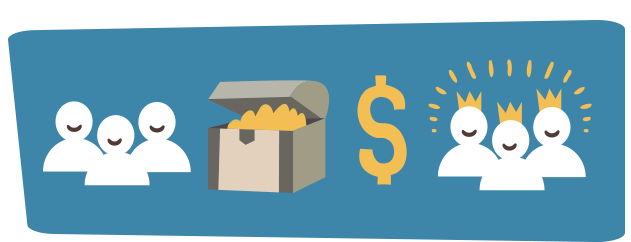 Most business owners want to get their Vision perfect before they share it with the world. But a true Visionary knows that nothing is ever perfect…
Most business owners want to get their Vision perfect before they share it with the world. But a true Visionary knows that nothing is ever perfect…
Walt clearly stated that Disneyland would never be finished. It would keep evolving. This is because a Brand needs to start somewhere then keep improving on things. So for those of you who ‘want it to be perfect’ you’ll have to be confident you can polish it up later.
After the Brand Premiere ends, a Brand should have people who bought your Brand’s ‘E-Ticket’ product…the Treasure #3!
5) Live Event
Any live event (in person or online) that educates and entertains your Audience about any of your teachings and gets them excited about becoming a Guest of one of your Treasures.
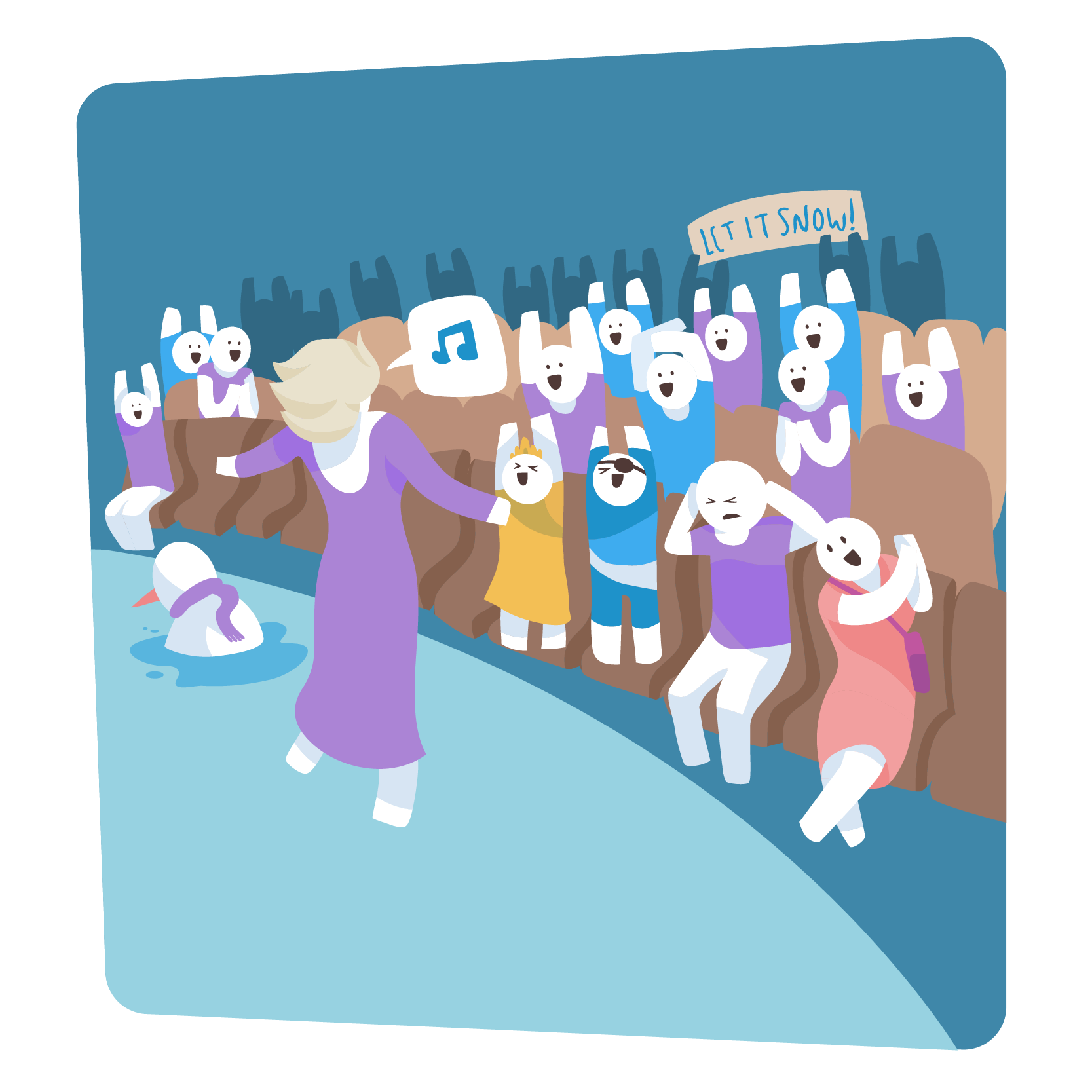 Disneyland has lots of exciting (or excruciatingly annoying) live shows where the Audience watches and participates. Some live shows are small, like the lively piano player on Main Street. And some events are massive, like the Fantasmic water show that packs in thousands of people each night.
Disneyland has lots of exciting (or excruciatingly annoying) live shows where the Audience watches and participates. Some live shows are small, like the lively piano player on Main Street. And some events are massive, like the Fantasmic water show that packs in thousands of people each night.
What do all these live shows have in common?
Whether its a musician hell-bent on playing your favorite song, or Mickey impressing you with his magic abilities, each show is filled with performers who captivate the attention of their Audience. And if they did their job right that Audience will run right over the merchandise counter and fill their shopping bags with souvenirs.
So what is the online version of a live show?
It’s a Live Event!
This can be a webinar, seminar or chat room. The core idea behind each of these delivery methods is for you to create a relationship with your attendees. And just like a great Disneyland show, you’ve got to ‘be on stage’ and deliver a captivating performance that shows your leadership skills, teaching abilities and knack for entertaining.
When you host a Live Event the right way it builds trust, affinity and inspiration in your Audience! It should educate them (usually about one of your Treasures) and get them excited to become a Guest.
Keep in mind that every Live Event doesn’t need to be striving for a sale… Sometimes it’s nice to surprise your Audience with something unexpected. In other instances you might hold a Live Event for Guests of one of your Treasures who have already made that purchase.
Live Events are the best way to share one of your stories while creating a greater sense of community. People love to experience things as a group. There’s a reason Walt planned so many live shows into the DNA of Disneyland. Learn from the master of Audience Experience and host some Live Events for your Audience.
In our Visionary Planner system we suggest you build a webinar based Live Event after you launch (and pre-sell) your Treasure #3. This way you can have 2 amazing marketing pieces...an automated Premiere (launch sequence) and a Live Event (webinar).
6) Treasure #3
A premium Treasure that a Brand offers. The objective of a Treasure #3 is to be a complete training solution for Guests in order to accomplish a goal that would be more comprehensive than a Treasure #1.
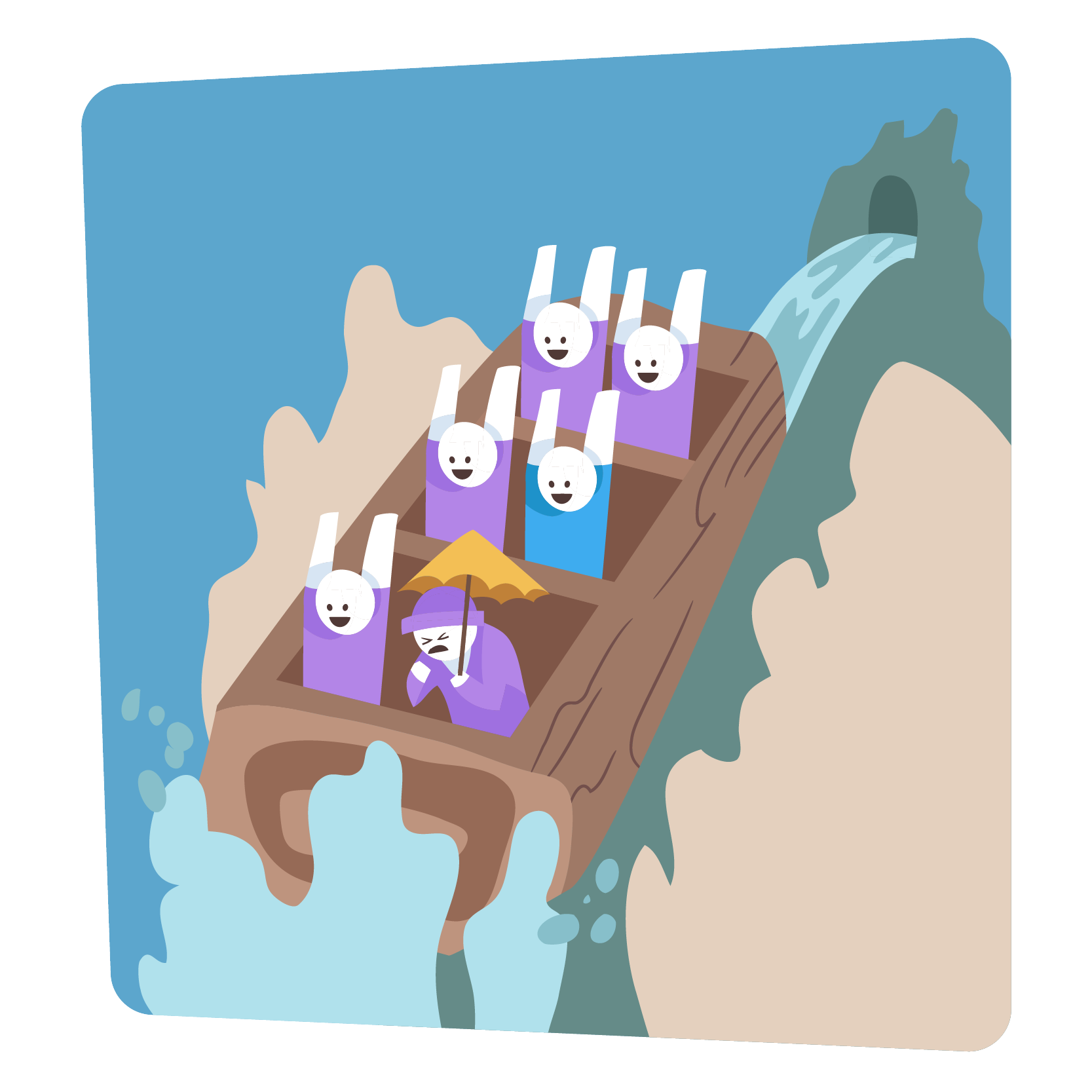 Disneyland has many ‘levels’ of rides. They have the simple rides like the carousel or explorer canoes on one end of the spectrum. On the other end they have the thrill rides like Star Tours, Space Mountain and The Indiana Jones Adventure. These rides are much more epic than sitting in a canoe, so they naturally have longer lines. If a long line equated to money, these rides would cost the most!
Disneyland has many ‘levels’ of rides. They have the simple rides like the carousel or explorer canoes on one end of the spectrum. On the other end they have the thrill rides like Star Tours, Space Mountain and The Indiana Jones Adventure. These rides are much more epic than sitting in a canoe, so they naturally have longer lines. If a long line equated to money, these rides would cost the most!
In your Brand, you should have a signature product that lets you charge a premium price. It should be comprehensive training solution for Guests that allows them to accomplish one specific task. This task is way more comprehensive than the one a Treasure #1 helps solve.
Let us give you a few examples…
The Visionary Planner’s Treasure #1 is our Clarity Planners.
These have the goal to give students a big picture overview of the steps they need to take to get clarity around a certain topic. They’re short and sweet and aim to give students all the info they need in just a few hours.
Our Treasure #2 is our continuity and group coaching program. This is a library of systems that students can use to quickly build each asset their brand needs.
Our Treasure #3 is a comprehensive training course that takes multiple hours each week to study, and goes deep on how to produce every Brand Asset in each Block of article 1. Because the Treasure #3 is much more comprehensive it costs much more.
But what about Brands that are not information based?
If you sell accounting software, your Treasure #1 might be a ‘guide to saving time and money doing taxes’ while your Treasure #3 is your software solution. Your Treasure #2 might be a monthly subscription on that software (at a low monthly rate) or a monthly support group to discuss the latest tax laws and ways to save).
Let’s say you’re in the ‘entertainment’ niche of selling art, music, films, crafts. If you have oil paintings (like my paintings) your Treasure #1 might be a journal or small book of images that sells for $12.95. Your Treasure #3 might be a large signed lithographic that sells for $299.95.
The secret to creating a Treasure #3 is to first grow your Audience List and then ask them what they want to buy!
They’ll tell you what they want your Treasure #3 to be!
You should have a bunch of ideas that you’ve already brainstormed that you will pitch to them. When you find a pitch that excites your Audience, you’ll pre-sell them on it (you do this in the Brand Premiere block). If enough of your Audience is willing to pay you before you create the Treasure #3 then you’re off to a great start!
You will have a wonderful ‘proof of concept’. Even better, you will have removed all risk of time and money because your Audience is paying you to create this Treasure.
Imagine the opposite where you invest 2 years and tens of thousands of dollars on the production of a Treasure only to find no one wants to buy it! That would be devastating.
We spent over three years planning the Visionary Planner. But each step of the way we tested our concepts and pre-sold the trainings. So we were never at financial risk in creating anything. Of course we reinvested all revenue to create the Visionary Planner trainings (as opposed to buying the house on the golf course I really want).
Do other Visionaries pre-sell?
For Disneyland, Walt ‘pre-sold’ the park to ABC TV.
ABC needed content for their new TV station (back in the 1950’s when TV was starting to get popular). Walt was able to sell shares of Disneyland to ABC for cash. This is how he was able to finance Disneyland. In exchange for the money he was able to produce a weekly show that got his Audience excited to…well, we’ll go over that in a minute…
7) Treasure #4
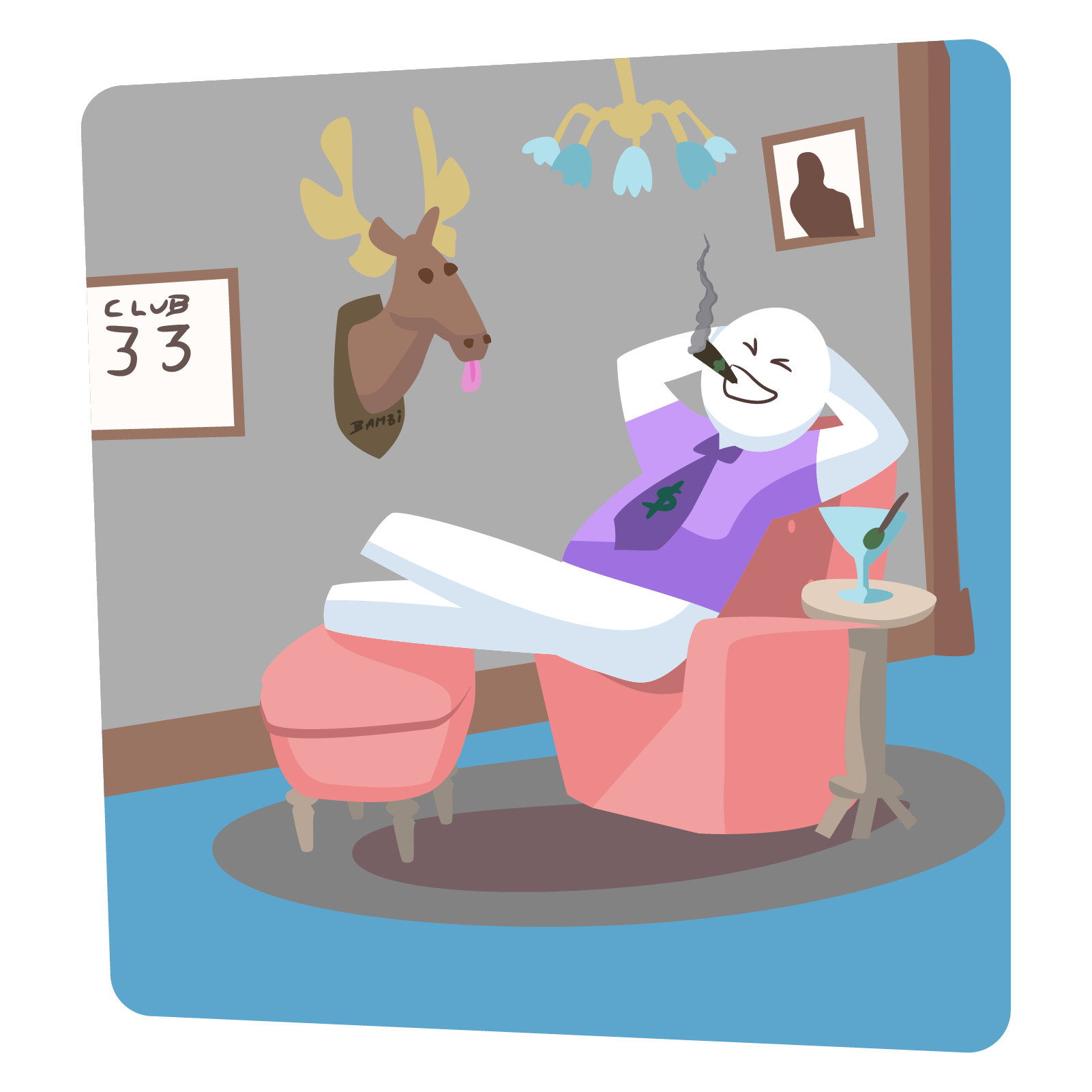 Disneyland has Club 33 - this is an exclusive dining club where there is a 14 year waiting list. Even more, there’s a $50,000 annual fee after a $15,000 application fee.
Disneyland has Club 33 - this is an exclusive dining club where there is a 14 year waiting list. Even more, there’s a $50,000 annual fee after a $15,000 application fee.
This is a high ticket offer that helps Disneyland maximize their profits and also attracts the 10% of their Audience who wants VIP experiences.
An online Brand can have a Treasure #4 also. This is simply where you take your Treasure #3’s structure and repurpose it so it eats up a little bit more of your time, and therefore you're going to charge a little bit more money for it.
Examples of this would be a done-for-you service, seminar, one-on-one consulting or exclusive retreat.
8) Book
A written work that establishes a Brand's teachings and expertise.
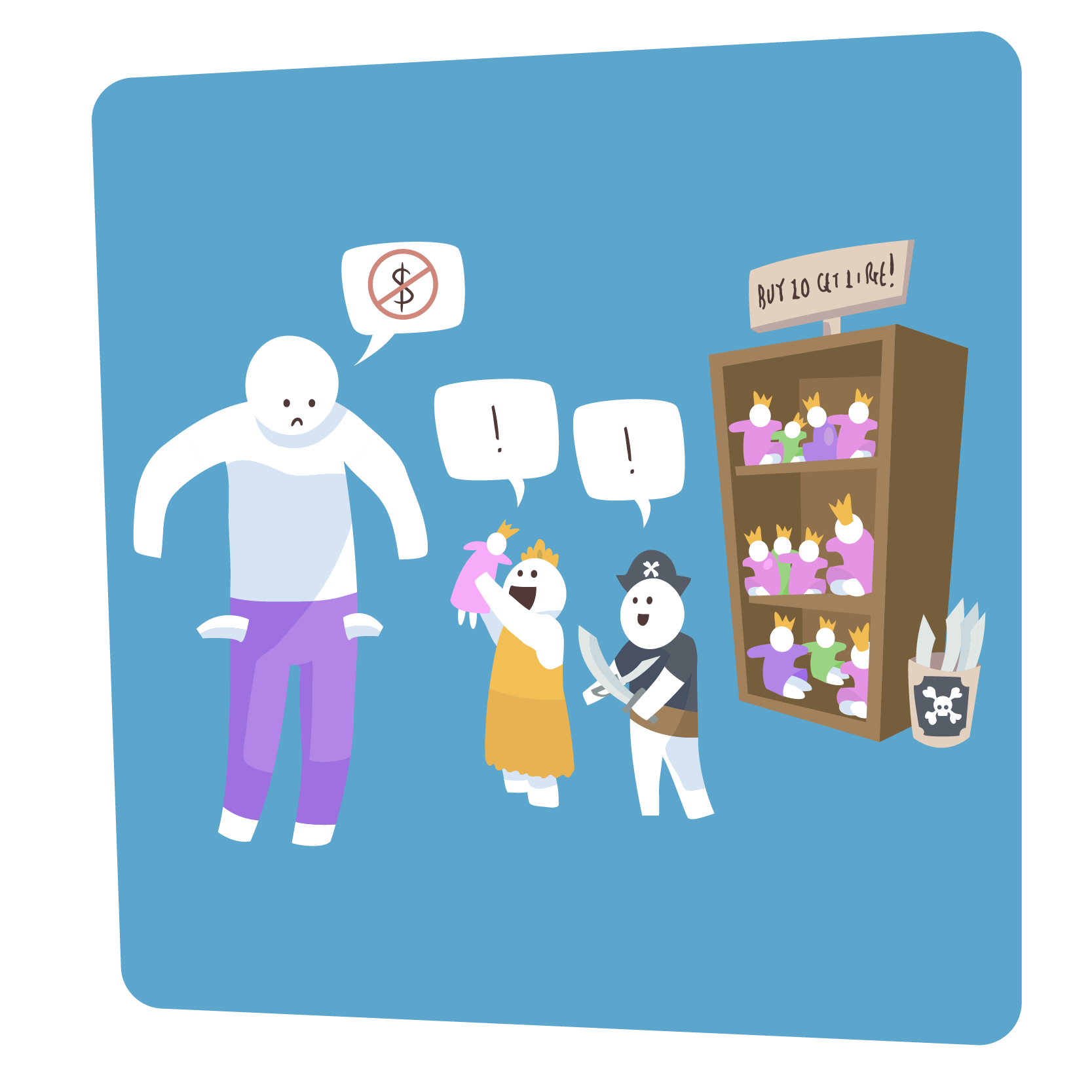 Disneyland has a built in shopping mall….it’s called Main Street.
Disneyland has a built in shopping mall….it’s called Main Street.
Main Street stays open one hour after the rest of the park closes.
Why?
So they can sell merchandise!
After a long day of standing in rides Guests can conveniently go shopping for souvenirs that remind them of their fun-filled day. All the merchandise is ‘repurposed’ content from Disney’s various movies, shows and attractions.
So what’s the equivalent of that in your online Brand? There are quite a few, but the one we’re going to focus on here is a Book.
If you follow build the Visionary Planner Blocks in order, you will already have outlined your Book (via your Publishing Calendar) and written the chapters (when you created your Episodes).
That means if you plan ahead you can repurpose the content you’ve already created. This Book will accomplish a few things:
First, it builds your authority because you’re now the author of a Book.
Second, it gives you an additional Treasure #1 to sell because your Book is going to be sold as a low priced offer (usually around $19.95).
The hardest part of creating a Book is the time is takes to write it. But following our Visionary Planner system this hard work is already done for you. You simply take your final Episode transcriptions and send them to a professional Editor. The Editor will help you restructure the content so it’s crystal clear as well as clean up any grammar, formatting or spelling issues.
Once your Book is ready you can sell it on Amazon (which is a massive search engine your Audience most likely uses). This additional exposure helps your Brand get noticed. And if you want to be really fancy you can submit your manuscript to publishers with the hopes of them supporting your book. New York Times Bestseller, here you come!
The way we see it, it’s smart to leverage your content to continue to grow your Brand!
Wrap Up
You just discovered the 8 Blocks of the Educate & Entertain Phase of the Visionary Loop.
You’ll want to initiate these Blocks in the correct order so you can confidently Premiere your Brand and keep your new Audience engaged.
Most business owners do this out of order and then get minimal results. But Visionaries find success (and avoid overwhelm) by going in the right order. It’s like doing a ballroom waltz…if you mess up where you put your footsteps you will fall!
You also learned:
- There are strategies to keeping planning your Social Media simple.
- Each piece of content should become a long term Asset for your business.
- You only get good at managing your Brand by taking that first step.
Of course, there are a few more things you will need to do after you start publishing your Episodes. You’ll need to keep revising your Brand based off changing Audience tastes and feedback.
Finally, you’ll want to run Ads and hold live events like webinars or workshops so you can Educate your Audience about your Treasure #3 and #4. Because these cost more your Audience will need much more information about it before they’re ready to buy. In fact, it’s usually best to let them sample the Treasure first!
*All trademarks used are the properties of their respective trademark owners.
Unlock Our Brand Vault (Free)
Get instant access to the 10 brand tools we use with our $4,200 clients. These frameworks have helped B2B leaders land premium clients, get featured on top podcasts, and clarify messaging that converts, without overhauling their website.
We hate SPAM. We will never sell your information, for any reason.


